Have you ever stood in the produce isle wondering about English Cucumbers versus Regular Cucumbers? Which one should you buy and what are they used for? Maybe you are planning on planting a garden and you are wondering which cucumbers you should plant.
When it comes to cucumbers, the choices seem endless. There are cucumbers of all shapes and sizes, each with its distinct flavor, texture, and culinary uses.
However, one comparison that often raises eyebrows is the difference between English cucumbers and regular cucumbers. Are they two distinct varieties or just a marketing gimmick? If you’ve ever found yourself pondering over this green mystery in the produce aisle, fret not. We’ll peel back the layers and dive into the subtle yet significant dissimilarities between these two cucumber types.
So, buckle up as we embark on a cucumber connoisseur’s journey, exploring the unique characteristics and culinary delights of English cucumbers versus regular cucumbers.
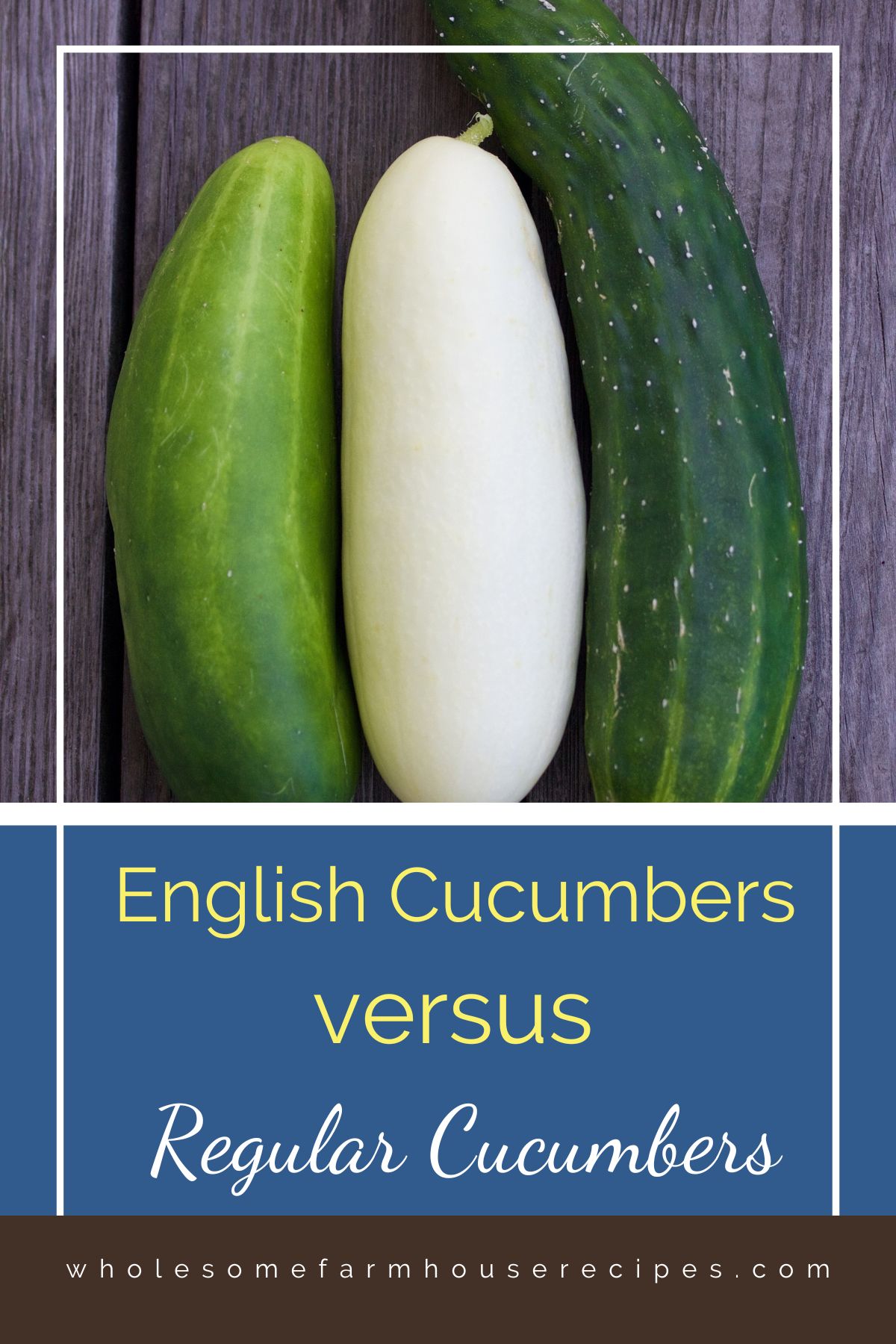
Easy Recipe for Pickled Cucumber Slices
We also have a delicious and easy recipe for Pickled Cucumber Slices. It is a delicious way to use your garden cucumbers. Keep reading or use the jump to recipe button at the top of this blog post.
Whether you’re a salad enthusiast, a pickle aficionado, or just a curious foodie, this guide will have something for everyone. Let’s delve into the world of cucumbers and discover what sets these crunchy green gems apart.
Slicing Cucumbers
Slicing cucumbers are cucumbers that are specifically grown and selected for fresh eating. They are larger than pickling cucumbers, typically around 6 to 9 inches in length. Most often, this is the standard cucumbers in grocery stores.
They have a waxy skin and a uniformly tough, dark green skin color. They have a crisp texture, a refreshing taste, and a thicker skin compared to a pickling variety. However, the skin can have a bitter taste. Therefore, for a milder flavor, it is best to remove the skin and seeds. They are great for salads, sandwiches, and as a raw snack.
Well-known varieties of slicers include Kirby cucumbers and Persian cucumbers, Marketmore, and Persian are popular choices for slicing.
Pickling Cucumbers
Grow these as they are uniform in width and length for easy pickling. They are shorter and thicker than slicers and may have bumpy or spotted skin.
Gherkins, also known as cornichons or baby dills, are a popular type of pickling cucumber. They make the pickling process easy. Their color varies from yellow to pale or dark green before pickling.
They are smaller than slicing cucumbers, usually around 2 to 4 inches in length. Pickling cucumbers have a thinner edible skin, which helps in absorbing the pickling brine and creating the characteristic tangy flavor of pickles.
Use these various types of pickles, for dill pickles, bread-and-butter pickles, and sweet pickles.
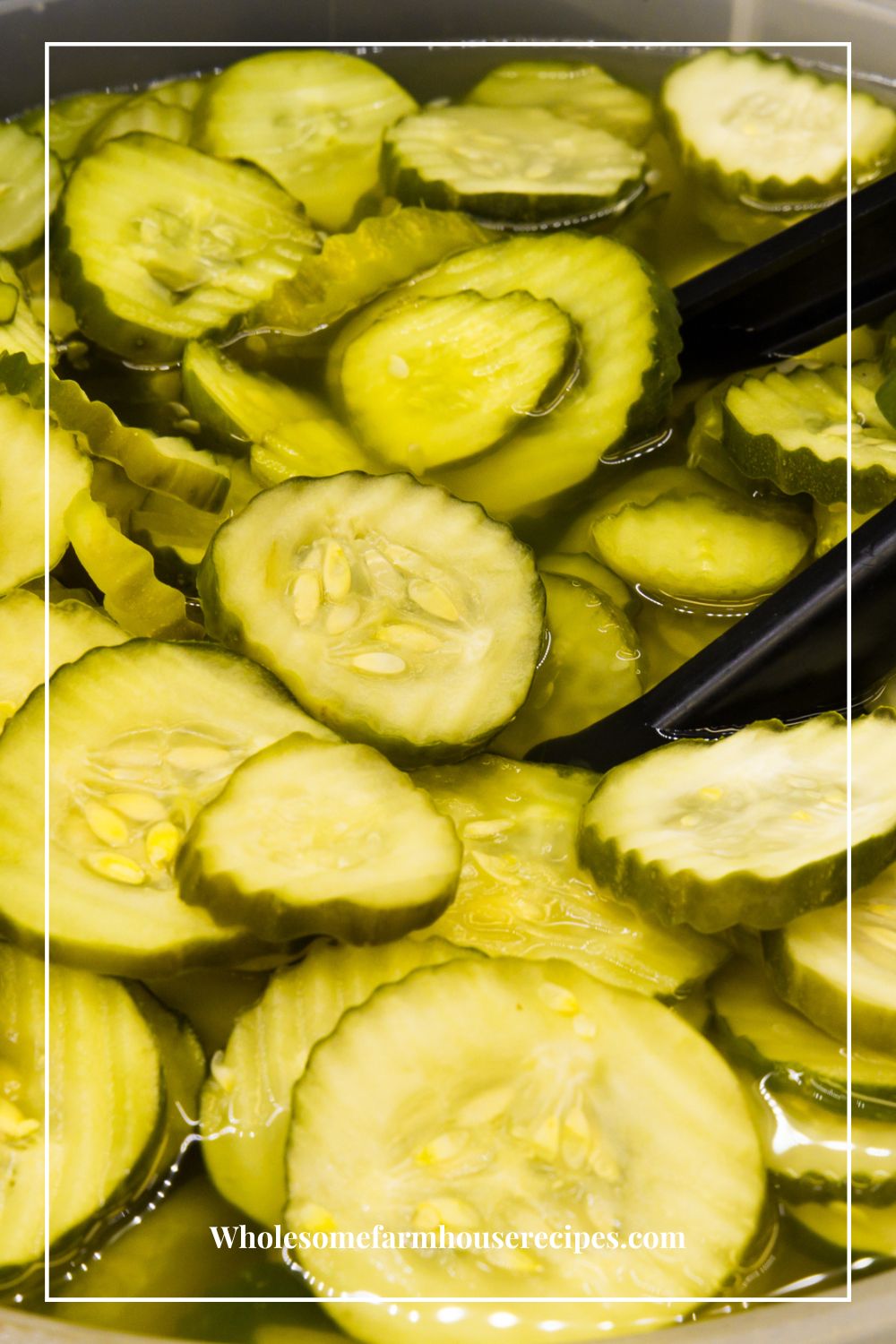
A Few of the Most Common Types of Cucumbers and Their Uses
Marketmore cucumbers are a popular variety known for their dark green color, uniform shape, and crisp texture. Use these for fresh eating, pickling, and salads.
Lemon Cucumber are small, round, and yellow, resembling a lemon in appearance. They have a mild, sweet flavor. Use these in salads and as a fresh snack.
Persian (Mini) Cucumber are tender and usually seedless. They have thin skin and a mild taste, making them ideal for salads and snacking.
Armenian Cucumber have a long, twisted shape like a snake. Their skin is usually light green with ridges. They have a slightly sweet and crisp flavor, often used in salads or eaten raw.
Pickling Cucumber
As the name suggests, these cucumbers are specifically grown for pickling purposes. They are smaller and have bumpy skin, making them ideal for pickling processes.
English (European) Cucumber
This variety was mentioned earlier. English cucumbers are long, slender, and seedless with thin, smooth skin. They have a mild taste. Use these in salads and sandwiches.
Japanese Cucumber (Kyuri)
In Japan, “Japanese cucumber” typically refers to a specific cucumber cultivar known as Kyuri (Cucumis sativus var. sativus). Japanese cucumbers are slender and have thinner, smoother skin compared to the common cucumber. They are usually seedless or have small, soft seeds. Kyuri cucumbers are known for their crisp texture, mild flavor. They are popular in Japanese cuisine for salads, sushi, and pickling.
English Cucumber vs Cucumber
The primary difference lies in their appearance, taste, and seed content. “English cucumber” refers to a specific variety with certain characteristics, while “common cucumber” is a broader term encompassing various cucumber types available in the market.
Regular Cucumber
This is the typical cucumber found in your local grocery store. It comes in various shapes and sizes, typically ranging from 6 to 9 inches in length. The skin is green and may have small bumps or ridges.
English Cucumber
English cucumbers are longer and narrower compared to slicing cucumbers. This is a specific type of cucumber with a long, slender shape and smoother, thinner skin compared to the common cucumber.
They are usually not waxed and are often wrapped in plastic. They have fewer seeds that are smaller and easier to eat, so there’s no need to de-seed them. Their taste is milder than the common cucumber.
English cucumbers have a less bitter, milder, and almost sweet taste. The skin is thinner and can be eaten, which sets them apart from other types. Sometimes, you will see them for sale with a label as “seedless cucumbers” or “burpless cucumbers.”
The plastic wrap protects the delicate skin and they are popular for use in salads and as a raw snack.
What are Hothouse Cucumbers?
Hothouse cucumbers, also known as greenhouse cucumbers or English cucumbers. Grow in an environment that is the right moisture, temperature, and light. This type of growing environment are greenhouses or hothouses. Unlike cucumbers grown in open fields, hothouse cucumbers are cultivated in a protected environment, providing them with optimal growing conditions.
Benefits of this type.
Long and Seedless. Hothouse cucumbers are usually longer and slenderer than field-grown cucumbers. They are often seedless or have smaller, less noticeable seeds.
Thinner Skin. Hothouse cucumbers are thinner, and smoother compared to regular cucumbers. This makes them more palatable, and many people prefer to eat them with their skin on.
Consistent Quality. Because they are grown in a controlled environment, hothouse cucumbers tend to have a more consistent quality, appearance, and taste throughout the year.
Crisp and Mild. Hothouse cucumbers have a crisp texture and a mild, refreshing flavor. Their taste is less bitter than some other cucumber varieties.
Protected Environment. Growing cucumbers in greenhouses or hothouses allows for protection from adverse weather conditions, pests, and diseases. This controlled environment enables farmers to grow cucumbers year-round in regions with colder climates.
Packaging. Hothouse cucumbers are often have a plastic shrink wrap or are placed in protective sleeves to prevent damage and maintain freshness during transportation and storage.
Hothouse cucumbers are popular for use in salads, sandwiches, wraps, and as a raw snack. Due to their look, consistent quality, and mild taste, they are preferred by many consumers and restaurant chefs. However, they may be more expensive than field-grown cucumbers due to the cost of greenhouse production and the ability to produce them throughout the year.
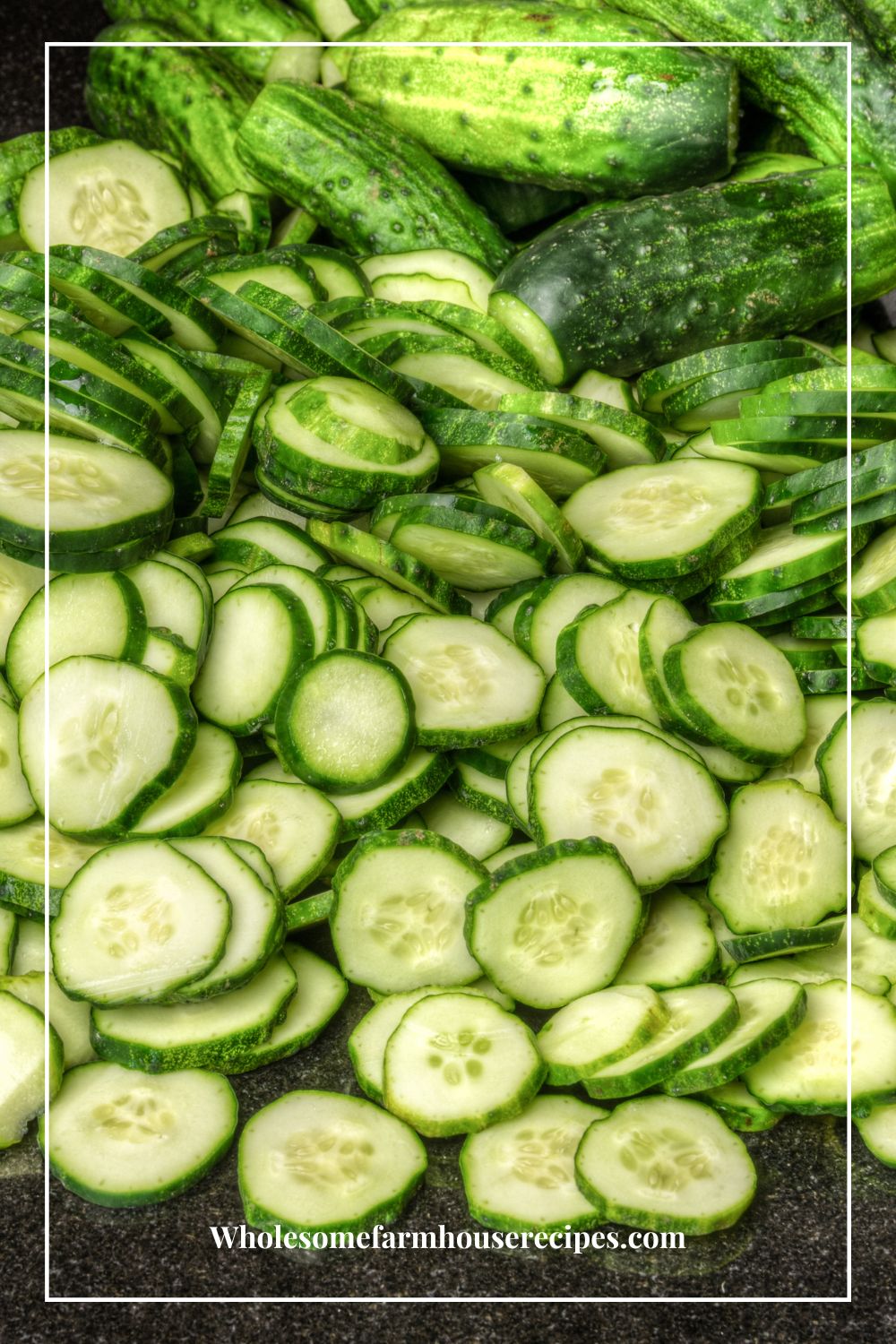
How to Tell if a Cucumber is Good?
To tell if a cucumber is good and fresh, use your senses to figure out if it is safe to eat. How does it look and smell?
Appearance. Look for a cucumber that has vibrant green color throughout its skin. It should be free from any yellowing, browning, or soft spots, as these are signs of spoilage.
Firmness. Gently squeeze the cucumber. It should feel firm but not rock-hard or overly soft. A good cucumber will have a slight give to it without being mushy.
Texture. The skin of a fresh cucumber should be smooth and free from wrinkles, cuts, or bruises.
Smell. Give the cucumber a quick sniff. It should have a fresh, mild scent. Avoid cucumbers with a strong or unpleasant odor, as it may indicate spoilage.
Weight. While this may not be as applicable for small cucumbers, for larger ones, a heavier cucumber is often a sign of higher water content and freshness.
Seeds. If you’re buying a cucumber with visible seeds (e.g., slicing cucumbers), check that the seeds are small and not excessively developed. Mature and large seeds can affect the texture and taste.
Packaging. If you’re buying a plastic-wrapped cucumber, ensure there are no signs of mold or excess moisture inside the packaging.
Remember that the freshness of a cucumber may vary depending on how long it has been sitting on the shelf. If possible, buy cucumbers from a reputable store with a high turnover rate to increase the likelihood of getting a fresh one.
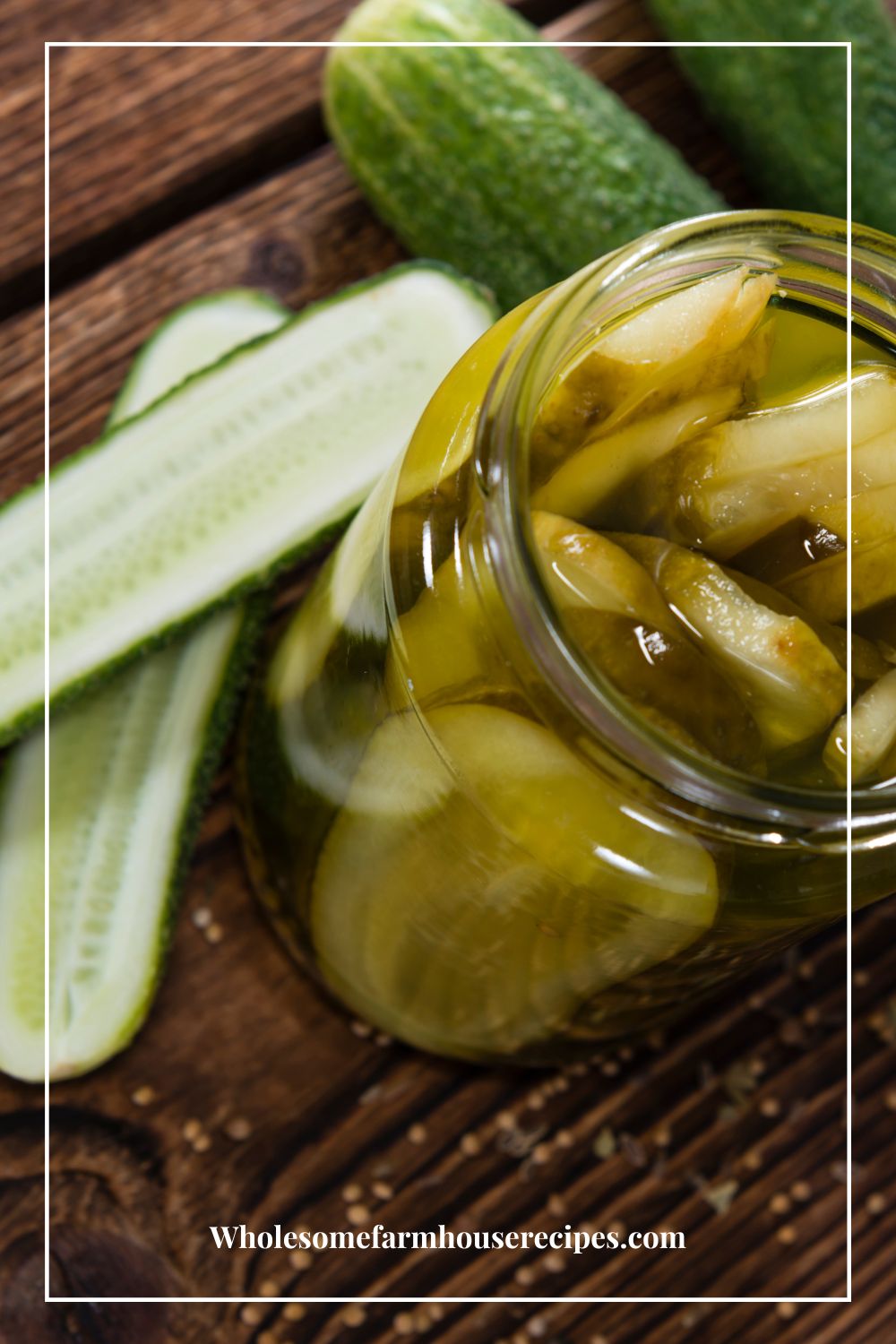
How to Cut a Cucumber?
Cutting a cucumber is a straightforward process. Here’s a step-by-step guide on how to cut a cucumber.
Tools you’ll need
A sharp knife
Cutting board
Safety first. Practice proper knife safety by using a stable cutting surface and using a sharp knife.
Steps
Wash the cucumber. Rinse the cucumber thoroughly under cold water to remove any dirt or residue from the skin.
Trim the ends. Using a sharp knife, cut off both ends of the cucumber. This step ensures that you have a fresh surface to work with.
Peel (optional). If the cucumber has a thick or waxy skin, you may choose to peel it. You can use a vegetable peeler or a knife for this task. However, some cucumber varieties, like English cucumbers, have thinner and more tender skin, which can be eaten without peeling.
Slice. There are several ways to slice a cucumber, depending on your preference and the recipe you’re using. Here are some common slicing methods:
Round slices. Lay the cucumber horizontally on the cutting board and use a knife to cut it into round slices of your desired thickness.
Diagonal slices. For a more decorative presentation, cut the cucumber at a slight angle to create diagonal slices.
Matchsticks (Julienne). To make thin, elongated strips, cut the cucumber into thin sticks by first cutting it into rounds and then stacking the rounds and cutting them into strips.
Cubes or chunks. Cut the cucumber into rounds, then stack and cut the rounds into equal-sized cubes or chunks.
Seed removal (optional). Some cucumber varieties have larger seeds that may be removed for certain recipes. To do this, cut the cucumber in half lengthwise, and then use a spoon or the tip of your knife to scoop out the seeds.
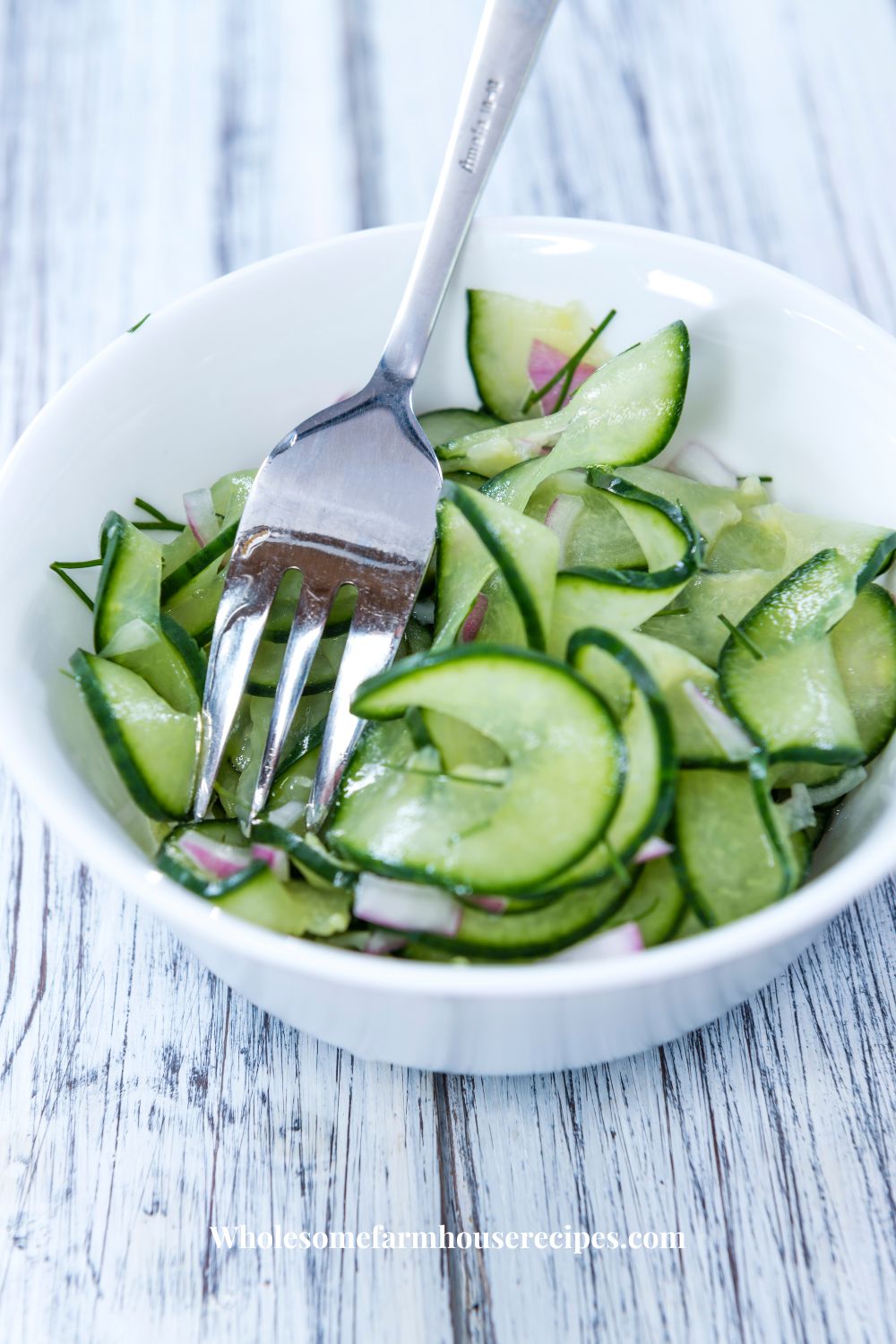
Cucumber Recipes
If you love cucumbers or have a garden full of delicious varieties, you might be interested in these delicious recipes.
Flavor Packed Cucumber Salad with a Little “BAM”
Easy Recipe for Pickled Cucumber Slices
As an Amazon Associate I earn from qualifying purchases.
Kitchen Essentials
Ingredients
- 3 Large Cucumbers thinly sliced
- 1 Cup Distilled White Vinegar
- 1 Cup Water
- 1/4 Cup Granulated Sugar
- 2 Tablespoons Kosher Salt or any non-iodized salt
- 1 Tablespoon Pickling Spice Blend
- 3 Cloves Garlic thinly sliced
- 1 medium White Onion thinly sliced optional
Instructions
- In a medium saucepan, combine the white vinegar, water, sugar, kosher salt, pickling spice blend, and sliced garlic. Bring the mixture to a simmer over medium heat, stirring occasionally until the sugar and salt dissolve. Remove the saucepan from heat and let the brine cool to room temperature.
- While the brine is cooling, thinly slice the cucumbers using a knife or a mandoline slicer. You can leave the skin on or peel the cucumbers, depending on your preference.
- Place the cucumber slices in a clean, airtight container or a glass jar. Add the thin sliced onions if you choose to add this ingredient.
- Once the brine has cooled, pour it over the cucumber slices, ensuring they are completely submerged. If necessary, use a weight or a small plate to keep the cucumbers submerged in the brine.
- Cover the container or jar tightly and refrigerate for at least 24 hours before enjoying the pickled cucumber slices. For the best flavor, let them sit in the refrigerator for a few days before serving.
- Serve the pickled cucumber slices as a delicious and tangy accompaniment to sandwiches, burgers, salads, or enjoy them as a refreshing snack.








